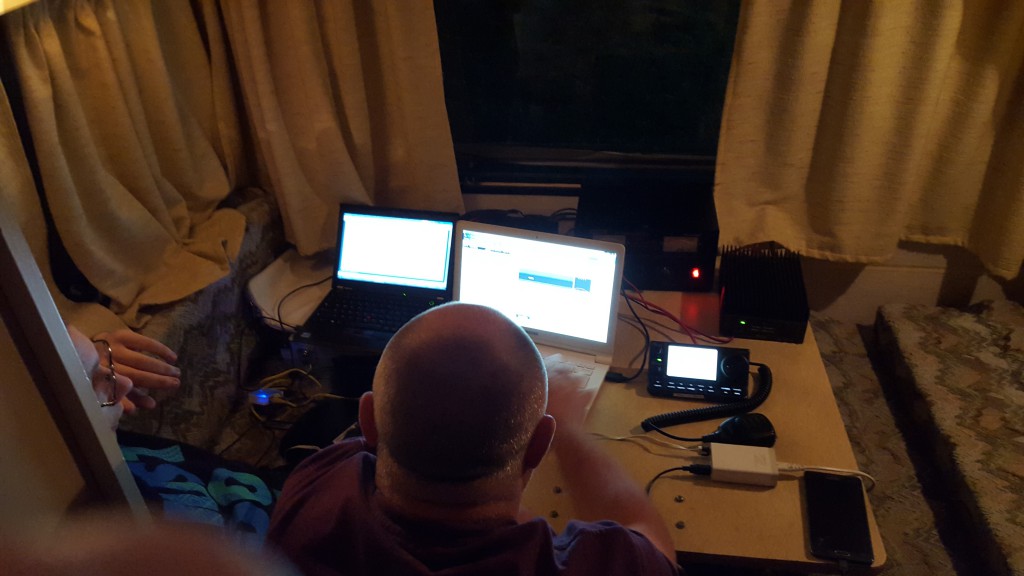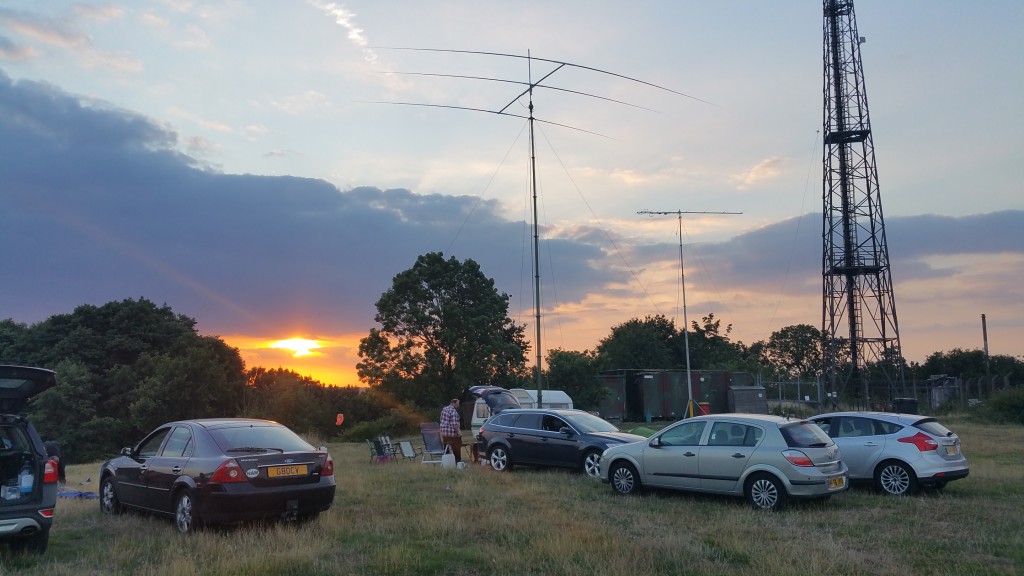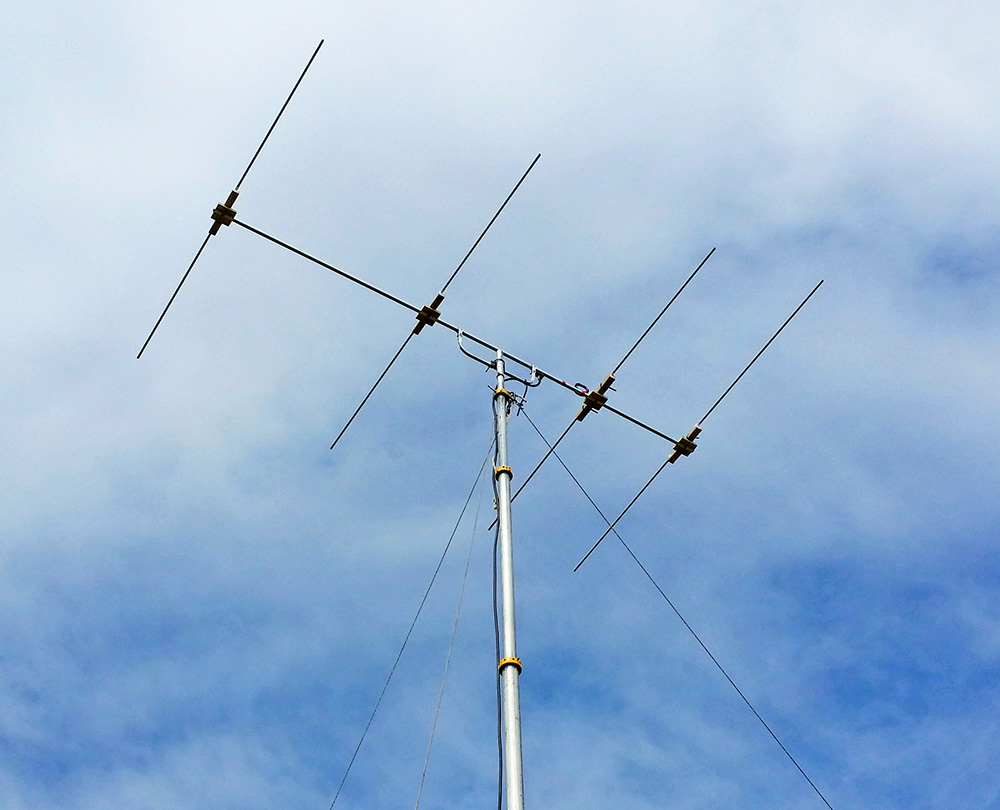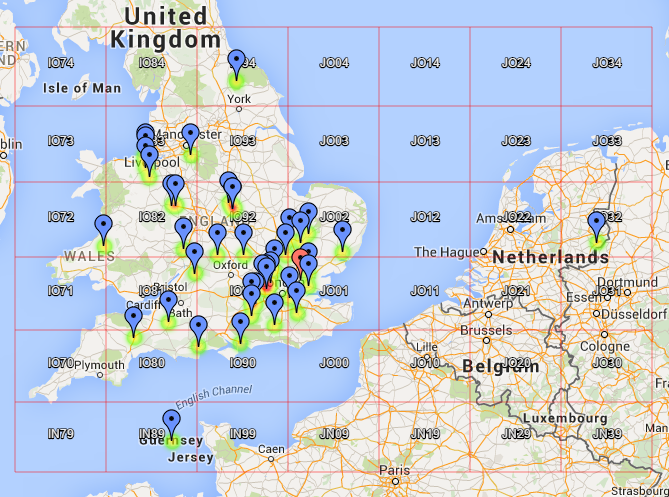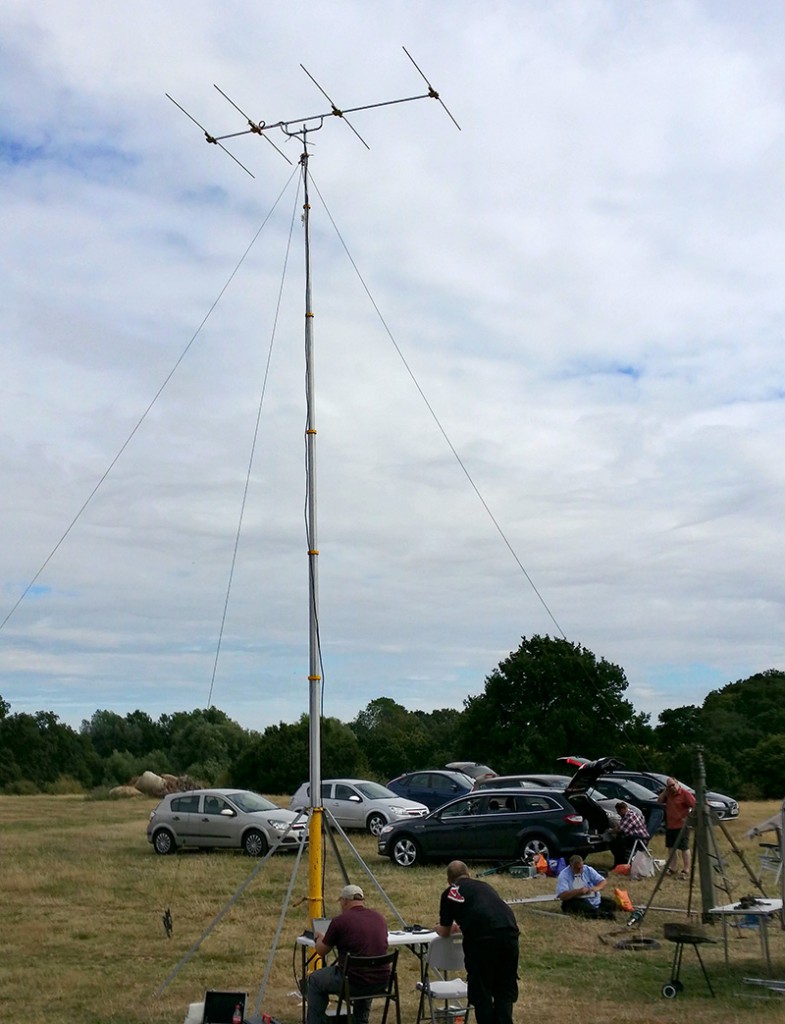This weekend was very close to the peak meteor shower from Perseid. This gave us an ideal opportunity to try meteor scatter for the very first time, using a 9-element G0KSC antenna at 10m and 100w amplifier. The antenna had G7UVW‘s LNA adding a further 20dB of gain to the receive path at the mast-head.
Using WSJT we were able to decode a number of stations, although it took some reading, and trial and error to make our first QSO. The first QSO was with OK1UGA in JO80dd, some 1137 km. Through the course of the evening we completed the following QSO.
| Callsign | QRA Locator | Distance (km) | Freq (MHz) | Mode |
| OK1UGA | JO80dd | 1137 | 144 | FSK441 |
| DF5NK | JN59PM | 812 | 144 | FSK441 |
| SP2FRY | JO83WR | 1215 | 144 | FSK441 |
| S56P | JN76PO | 1225 | 144 | FSK441 |
| OK1DQT | JO70IB | 1027 | 144 | FSK441 |
| YU7TT | KN05FW | 1662 | 144 | FSK441 |
| M1BXF | JO02FE | 71 | 144 | JT6M |
| F8DYR | JN07WL | 487 | 144 | JT65A |
| I6BQI | JN72AK | 1456 | 144 | FSK441 |
| SM7FWZ | JO78MM | 1134 | 144 | FSK441 |
| IZ3WQO | JN65CL | 1110 | 144 | FSK441 |
Since the use of WSJT is not much of a spectator sport, we also had a 20 metre beam up to shout on HF, which was later changed to 17 metres to avoid the ongoing CW contest. Full log breakdown here. Best DX was CE6SAX (12320 km) and YB3HJM (12280 km).
In the afternoon, John M0UKD arrived with a homebrew 4 metre beam which he built on the Saturday (8th Aug 15) to a DK7ZB design.
We worked 40 stations in 2 hours, which I think is good for 70MHz. Our best DX was PA4VHF at 449km.
